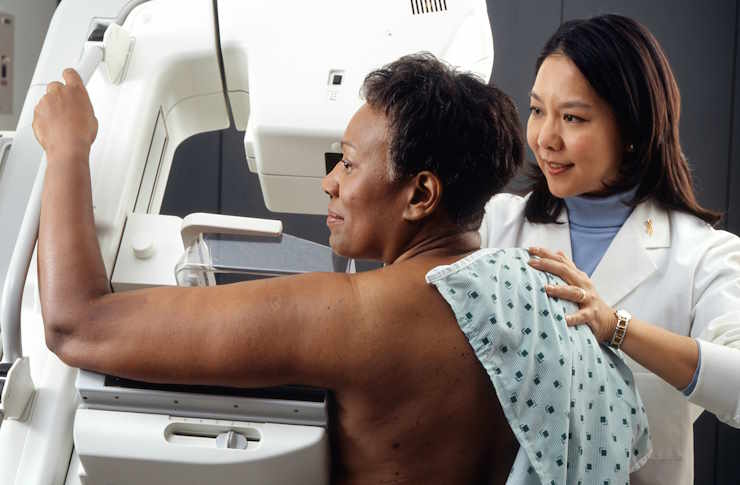Understanding the Body's Signals: Early Cancer Detection and Screening
Understanding the body's signals is a key part of proactive health management. While many changes are normal, some subtle signs can be worth discussing with a healthcare professional. This educational guide, developed with information from trusted sources like the American Cancer Society, explores potential early indicators and modern tests available for detection. The purpose of this information is to be empowering and educational, not to cause alarm.

What are common early signs that shouldn’t be ignored?
Cancer can manifest in various ways, and early detection is crucial for successful treatment. Some general signs to be aware of include:
-
Unexplained weight loss
-
Fatigue that doesn’t improve with rest
-
Fever that persists or comes and goes
-
Changes in skin color or texture
-
Sores that don’t heal
While these symptoms can be caused by many non-cancerous conditions, it’s essential to discuss persistent changes with your healthcare provider. They can help determine if further investigation is necessary.
How do modern cancer detection tests work?
Advancements in medical technology have led to more accurate and less invasive cancer detection methods. Some common screening tests include:
-
Imaging tests: MRI, CT scans, and PET scans can create detailed images of internal organs and tissues to identify abnormal growths.
-
Blood tests: Certain blood markers can indicate the presence of specific types of cancer.
-
Genetic testing: This can identify inherited mutations that may increase cancer risk.
-
Liquid biopsies: These tests analyze blood samples for circulating tumor cells or DNA, potentially detecting cancer at early stages.
-
AI-assisted diagnostics: Machine learning algorithms are being developed to analyze medical images and data, potentially improving early detection rates.
Your doctor can recommend appropriate tests based on your age, risk factors, and any symptoms you may be experiencing.
What are key breast cancer clues to watch for?
Breast cancer is one of the most common cancers affecting women, and early detection significantly improves outcomes. Some important signs to be aware of include:
-
A new lump or thickening in the breast or underarm area
-
Changes in breast size, shape, or appearance
-
Dimpling, puckering, or redness of the breast skin
-
Nipple changes, such as inversion or discharge
-
Persistent pain in any area of the breast
Regular self-exams and mammograms are crucial for early detection. The American Cancer Society recommends annual mammograms for women starting at age 45, with the option to begin at 40 based on individual risk factors and preferences.
How often should cancer screening tests be performed?
The frequency of cancer screening tests varies depending on the type of cancer, individual risk factors, and age. Here are some general guidelines:
-
Breast cancer: Annual mammograms for women 45 and older, with the option to start at 40.
-
Colorectal cancer: Regular screening starting at age 45, with colonoscopies typically recommended every 10 years for average-risk individuals.
-
Cervical cancer: Pap tests every 3 years for women 21-65, with the option of HPV testing every 5 years for those 30-65.
-
Prostate cancer: Discuss screening options with your doctor starting at age 50 (or earlier for high-risk groups).
-
Lung cancer: Annual low-dose CT scans for high-risk individuals aged 50-80 with a significant smoking history.
These are general guidelines, and your healthcare provider can offer personalized recommendations based on your specific health profile and risk factors.
What new technologies are improving cancer detection?
Emerging technologies are revolutionizing cancer detection, offering the potential for earlier and more accurate diagnoses:
-
Multi-cancer early detection (MCED) tests: These blood tests can potentially detect multiple types of cancer from a single sample.
-
Artificial intelligence in imaging: AI algorithms are being developed to assist radiologists in identifying subtle abnormalities in mammograms, CT scans, and other imaging studies.
-
Nanosensors: Tiny sensors that can detect cancer biomarkers in bodily fluids are being researched for early detection.
-
Breath analysis: Some studies are exploring the potential of detecting certain cancers through analysis of volatile organic compounds in exhaled breath.
-
Microbiome testing: Research is ongoing into how changes in the gut microbiome might indicate the presence of certain cancers.
While many of these technologies are still in development or early stages of implementation, they represent exciting advancements in the field of cancer detection.
Understanding potential early signs of cancer and available screening options is an important part of maintaining overall health. Regular check-ups, open communication with your healthcare provider, and staying informed about your body can contribute to early detection and improved outcomes. Remember, many changes in our bodies are normal and non-cancerous, but when in doubt, it’s always best to consult with a medical professional.
This article is for informational purposes only and should not be considered medical advice. Please consult a qualified healthcare professional for personalized guidance and treatment.




